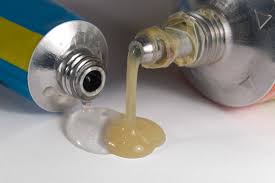
The Importance of Adhesives in Modern Manufacturing
Adhesives play a crucial role in modern manufacturing processes across various industries. These versatile substances are used to bond materials together, providing strength, durability, and flexibility to the finished products. From automotive to electronics, adhesives have become indispensable in creating high-quality goods efficiently.
Types of Adhesives
There are different types of adhesives available, each designed for specific applications. Some common types include:
- Cyanoacrylate adhesives (super glue) – known for fast bonding on various materials
- Epoxy adhesives – offering high strength and resistance to chemicals and heat
- Polyurethane adhesives – providing flexibility and impact resistance
- Acrylic adhesives – suitable for bonding plastics, metals, and composites
Applications in Various Industries
Adhesives are widely used in industries such as:
- Automotive – for bonding components like panels, trims, and glass
- Electronics – in assembling circuit boards and securing components
- Aerospace – for lightweight structural bonding in aircraft construction
- Construction – for joining building materials like wood, metal, and concrete
Advantages of Using Adhesives
The use of adhesives offers several advantages over traditional mechanical fastening methods:
- Uniform distribution of stress across the bonded area
- No need for drilling or welding, reducing damage to materials
- Enhanced design flexibility due to the ability to bond dissimilar materials
- Improved aesthetics with no visible fasteners on the surface
Sustainability Considerations
In addition to their functional benefits, adhesives contribute to sustainability efforts by enabling lighter-weight designs that reduce energy consumption during transportation and usage. Furthermore, some adhesives are formulated with environmentally friendly ingredients to minimize their impact on the environment.
In Conclusion
The widespread use of adhesives underscores their importance in modern manufacturing processes. As technology advances and new formulations are developed, adhesives will continue to play a vital role in enhancing product performance while supporting sustainability goals across industries.
Top 5 Tips for Effective Adhesive Application and Storage
- Ensure surfaces are clean and dry before applying adhesive.
- Use the appropriate type of adhesive for the materials you are bonding.
- Follow the manufacturer’s instructions for application and curing times.
- Apply adhesive in a well-ventilated area to avoid inhaling fumes.
- Store adhesive in a cool, dry place away from direct sunlight and heat sources.
Ensure surfaces are clean and dry before applying adhesive.
Before applying adhesive, it is essential to ensure that the surfaces to be bonded are clean and dry. Any dirt, dust, oil, or moisture present on the surfaces can compromise the bonding strength of the adhesive. Cleaning the surfaces thoroughly helps create a strong bond and ensures that the adhesive can effectively adhere to the materials. Additionally, a clean and dry surface promotes better adhesion and prevents any potential issues that may arise from contaminants interfering with the bonding process.
Use the appropriate type of adhesive for the materials you are bonding.
When working with adhesives, it is essential to use the appropriate type of adhesive for the materials you are bonding. Different adhesives are designed to work best with specific materials, ensuring a strong and durable bond. Using the wrong type of adhesive can lead to weak bonds, poor adhesion, or even damage to the materials being bonded. By selecting the right adhesive for the job, you can ensure a successful bonding process and achieve optimal results in your projects.
Follow the manufacturer’s instructions for application and curing times.
It is crucial to follow the manufacturer’s instructions for the application and curing times of adhesives. Adhering to these guidelines ensures that the adhesive bonds effectively and achieves the desired strength and durability. Proper application techniques and adherence to specified curing times help optimize the performance of the adhesive, leading to reliable and long-lasting bonds between materials. By following the manufacturer’s instructions diligently, users can maximize the effectiveness of the adhesive and avoid potential issues that may arise from improper usage.
Apply adhesive in a well-ventilated area to avoid inhaling fumes.
It is important to apply adhesive in a well-ventilated area to prevent inhaling fumes. Adequate ventilation helps disperse potentially harmful vapors released during the bonding process, reducing the risk of respiratory issues and ensuring a safer working environment. By following this simple tip, you can protect your health and promote better air quality while working with adhesives.
Store adhesive in a cool, dry place away from direct sunlight and heat sources.
It is important to store adhesive in a cool, dry place away from direct sunlight and heat sources to maintain its effectiveness and prolong its shelf life. Exposure to high temperatures and UV rays can degrade the adhesive properties, leading to reduced bonding strength and performance. By storing adhesive properly, you can ensure that it remains in optimal condition for use, providing reliable bonding solutions for your projects.
